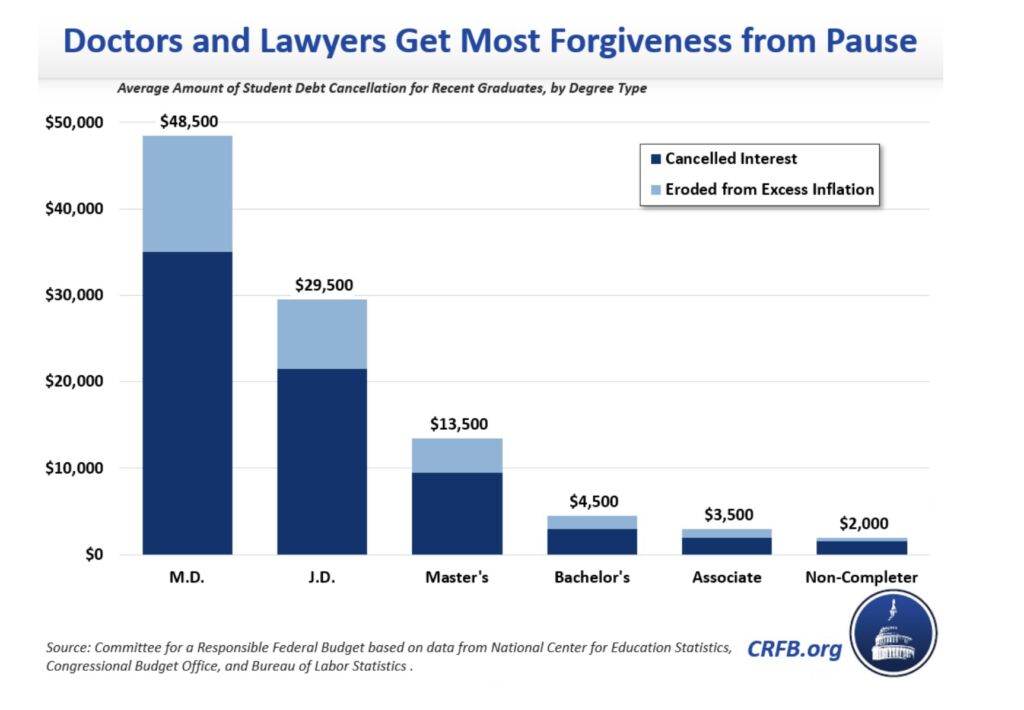High-income earners benefited most from student loan payment pause
During the pandemic, people made calls for the cancellation of student debt. However, the best that President Joe Biden could offer was putting a pause on loan payments. These calls to cancel student debt continue, of course. And interestingly enough, lawmakers advocating for student loan cancellation claim this will help low-income students or disadvantaged groups.
A lot of evidence exists, however, showing that student loan cancellation is unlikely to benefit disadvantaged individuals. Higher-income individuals, it turns out, hold the majority of student loan debt. Moreover, on average, low-income individuals hold smaller loans compared to high-income loan holders.
According to the Brookings Institute,
Accounting correctly for both human capital and effect of subsidies in student lending plans, almost a third of all student debt is owed by the wealthiest 20 percent of households and only 8 percent by the bottom 20 percent. Across-the-board student loan forgiveness is regressive measured by income, family affluence, educational attainment—and also wealth.
The idea that student loan forgiveness is regressive is especially cemented by looking at who benefited when student loans were paused. According to the Committee for a Responsible Budget, it was individuals in high-paying jobs like doctors and lawyers who benefited the most.

Why is this so? The committee explains that doctors, for example, have higher debt when they leave college. But they also earn more money compared to most other loan holders.
The primary reason that new medical school graduates have such high amounts of interest forgiven and debt eroded by inflation is that they incur much more debt than other students. A typical medical student leaves school with $265,000 of debt, compared to $31,000 for someone with a bachelor’s degree and $13,000 for someone who left school without completing a degree.2 That higher debt, of course, comes with higher earning potential. Eight of the ten highest-paid occupations in America are types of medical doctors – the other two are types of dentists.
The disparity is also apparent when examining the student loan portfolio by debt size. Although only 7 percent of borrowers have over $100,000 of debt, their debt accounts for almost 40 percent of the amount outstanding in the loan portfolio. Those with over $200,000 of debt account for 2 percent of borrowers and 17 percent of the amount outstanding. Whereas $10,000 of debt cancellation distributes somewhat evenly across borrowers (most of whom are already higher earners), the payment pause disproportionately benefits the small minority of borrowers with graduate degrees.3
Any way you slice it, the fact of the matter is that calls for student loan cancellation are misguided and will primarily benefit high earners.